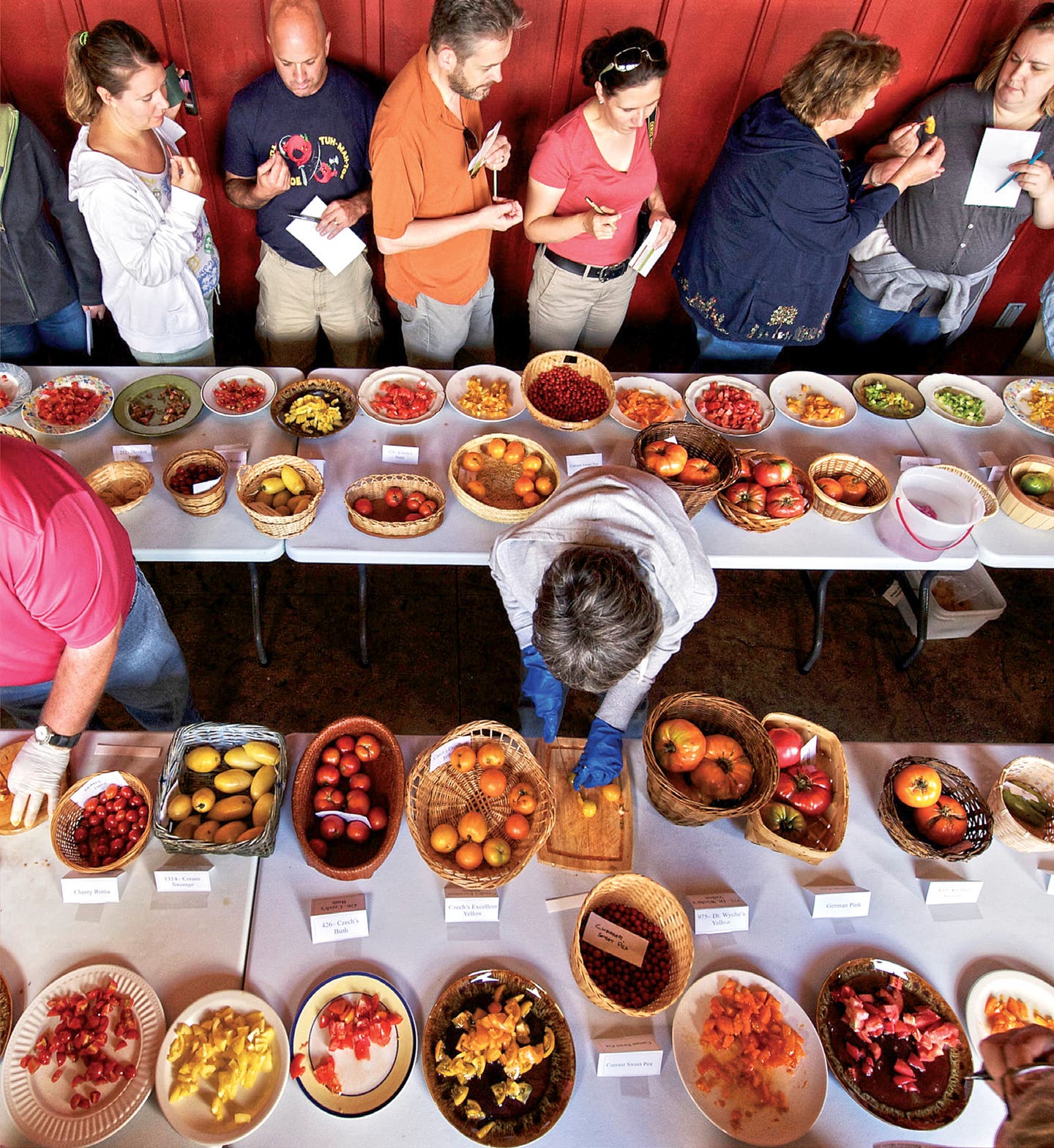
Inside Earth’s Last Line of Defense to Preserve Biodiversity
A tasting of ultra-rare tomatoes at the Svalbard global seed vault
It's impossible to visualize all the varieties of the tomato. I like to compare it to dogs, of which there are only about 400 different breeds. Tomatoes, however, have thousands of varieties, all genetically distinct. A Mortgage Lister beefsteak and a Sara's Galapagos are about as different as a dachshund and a Great Dane. They each have different characteristics, tastes, disease and pest resistance, and culinary uses. Every year, the folks at Seed Savers Exchange, an organization of gardeners dedicated to preserving heirloom crops, grow hundreds of varieties at Heritage Farm and offer them up to the public to see and sample.
Diversity is an essential element for the future of agriculture. Seed Savers makes no value judgments on which seeds to preserve. The answer is simply “all of them.” The goal is to encourage others to grow and perpetuate these garden heirlooms. Seed banks like theirs, as well as the Svalbard Global Seed Vault—which stores more than 880,000 duplicate seed samples from 233 countries securely inside a mountain on an arctic island just north of mainland Norway—are a safeguard for biodiversity, helping to keep as many options as possible open for the future. Seed Savers Exchange contributes regularly to the Svalbard vault, where our remote location ensures the protection of this massive collection from almost any disaster, natural or otherwise.
There's no telling what variety might benefit us most in the future, whether for its high yield or resilience to drought, but it's no small comfort to know that somewhere in a vault, among the thousands and thousands of tomato seeds, will be the traits needed for virtually every scenario—even if it's just for deliciousness.
Cary Fowler is the author of Seeds on Ice (Prospecta Press, 2016) and is chair of the International Advisory Council for the Svalbard Global Seed Vault.
Keep Reading
Continue to Next Story










